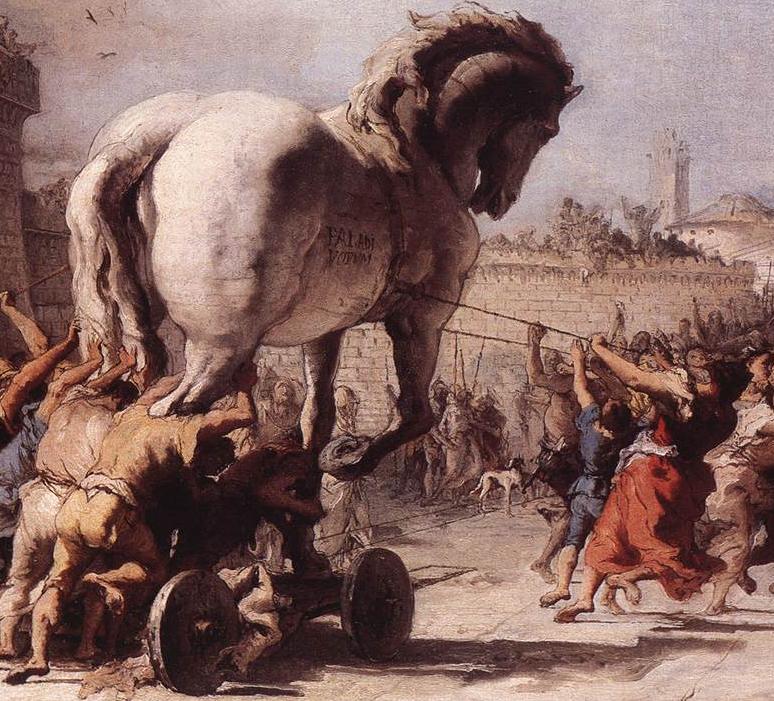What horses can teach you about strategy
In her Forbes article on the topic of why strategy matters, Lois Gellar relates an excellent analogy that spells out the difference in an accessible way. It was originally devised by an NYU Creative Director to help students understand the relationship between strategy and tactics, and uses the well known story of the Trojan Horse.
The objective: Defeat the city of Troy.
The context: Prince Paris ran off with the beautiful Helen, wife of Greek King Menelaus, to his hometown of Troy. Menelaus has his brother Agamemnon launch an army to sack Troy and return Helen to her husband. Failure to breach the walls of the city has resulted in 10 years of ongoing siege.

The Burning of Troy by Johann Georg Trautmann
The strategic idea: After a decade of failing to open the gates of the city from the outside, a new idea emerges: open the gates from the inside. This becomes the new strategy: the big idea.
The tactical idea: There were numerous tactics they could try to get the gates opened from the inside. Gellar suggests, “bribery, sneaking in, swimming through sewers or just tossing volunteers over the wall”. The winning tactic is the now-famous Trojan horse: a hollowed out giant horse ‘left’ as a gift to the Goddess Athena, secretly full of Greek soldiers. The Greeks pretend to sail away and the Trojans haul the horse into the city, to revel in their victory.

The Procession of the Trojan Horse by Giovanni Domenico Tiepoli
The result: The Greeks emerge from the horse, open the gates to let their friends in and sack the city. The Trojans are defeated.
It’s important to note, which Gellar also highlights, that even though the Trojan horse tactic gets all the credit, this bright idea would never have been thought of, nor the war won if it weren’t for the strategic decision to focus on opening the gates from the inside. And why was that strategy chosen? Because past efforts to breach the gates from the outside had failed and the problem needed tackling from a different angle. In this case, literally.
In summary

Clear objectives, combined with an understanding of the wider context inform your strategic approach. In turn, this guides your tactical plan. If you get each part of this puzzle right, you’re headed for success – just like the Greeks.

